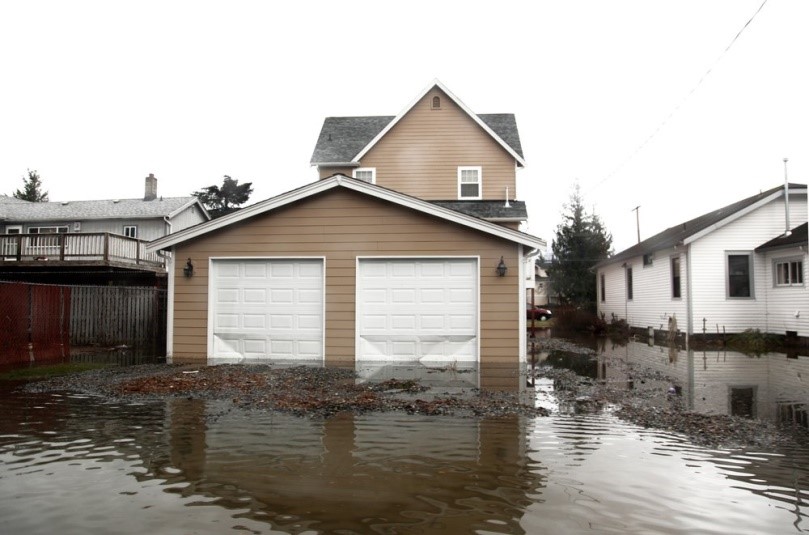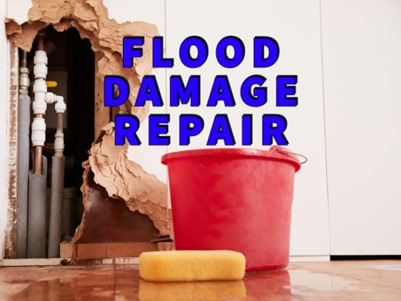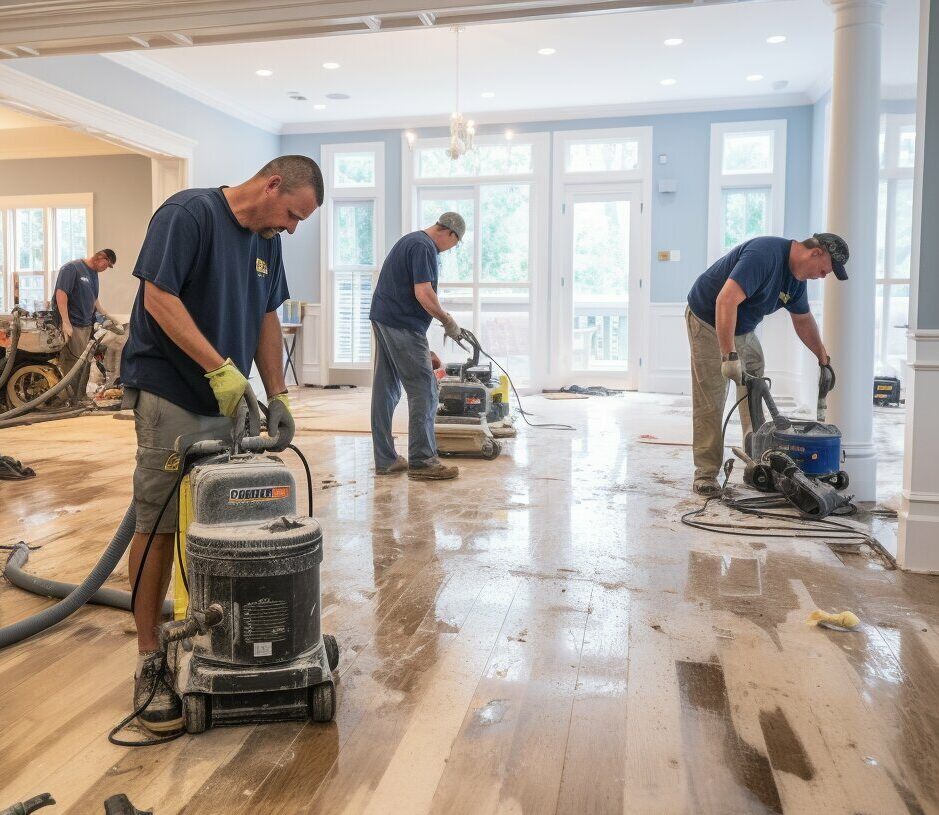Water Damage Cleanup Westchester – Flood Damage Cleanup Westchester
Flood damage repair involves restoring a property that has been affected by water damage due to flooding. This process is complex and requires careful assessment, removal of water, drying, cleaning, and repairing of damaged areas to prevent further issues like mold growth and structural damage.
Flooding commonly occurs due to such events as seepage from groundwater, above ground flooding from heavy rains, sewer backups, plumbing leaks from pipes, a water heater, boiler or air conditioner condensate pump, aquariums, burst heat pipes due to freezing, overflowed sinks and bathtubs, or other types of spills.
If your home or commercial building has suffered water intrusion or other flood-related damage, contact Certified Inspections, Inc. at www.certifiedinspections.com
Flood damage repair involves restoring a property that has been affected by water damage due to flooding. This process is complex and requires careful assessment, removal of water, drying, cleaning, and repairing of damaged areas to prevent further issues like mold growth and structural damage.
Key Steps in Flood Damage Repair:

1. Assessment and Safety Measures:
Before starting any work, a thorough assessment of the damage is conducted. This includes checking the structural integrity of the building and identifying any hazards, such as electrical risks.
Safety measures are taken, including shutting off electricity, wearing protective gear, and ensuring that the area is safe to enter.
2. Water Removal:
All standing water is removed using pumps, wet vacuums, or other specialized equipment. The quicker the water is removed, the less likely it is that extensive damage will occur.
Basements and lower levels are often the most affected, and careful attention is needed to ensure all water is extracted.
3. Drying and Dehumidification:
After the water is removed, the affected areas need to be thoroughly dried. Industrial fans, dehumidifiers, and heaters are used to remove moisture from the air and building materials.
Walls, floors, and other porous materials need to be dried quickly to prevent mold growth and further structural damage.
4. Cleaning and Disinfection:
All affected areas are cleaned and disinfected to remove any contaminants brought in by floodwaters, such as bacteria, viruses, or chemicals.
Non-porous surfaces are scrubbed and sanitized, while porous materials like carpets and upholstery might need to be discarded if they cannot be properly cleaned.
5. Mold Prevention and Remediation:
Mold can begin to grow within 24 to 48 hours after a flood, so mold prevention is critical. This includes the use of mold inhibitors and proper ventilation.
If mold has already started to grow, a professional mold assessor should be brought in and then a remediation service may be necessary to safely remove it.



6. Repair and Restoration:
Once the area is clean and dry, repairs can begin. This might include replacing drywall, flooring, insulation, and electrical systems, as well as repairing or replacing damaged furniture and personal belongings.
Structural repairs may be needed if the flood has weakened the foundation or other key parts of the building. This would be evaluated by a structural engineer (PE).
7. Inspection and Documentation:
After repairs are completed, a final inspection should be done to ensure that all work has been done correctly and that the property is safe to occupy.
Documentation of the damage, repair process, and costs is important for insurance claims.
8. Insurance Claims:
It’s crucial to contact your insurance company as soon as possible after the flood to start the claims process. Detailed documentation, including photos and receipts, will be needed to support your claim.
Additional Considerations:
Prevention of Future Damage:
Consider taking steps to prevent future flood damage, such as installing sump pumps, waterproofing the basement, or improving drainage around the property.
Health Risks:
Floodwaters often contain hazardous materials, including sewage, chemicals, and debris, which pose serious health risks. Professional help is often needed to ensure the area is safe.
Timing:
The sooner flood damage repair begins, the better the chances of salvaging materials and preventing long-term damage. Delay can lead to more extensive repairs and increased costs.

Professional vs. DIY Repair:
While some minor repairs can be handled by homeowners, significant flood damage typically requires professional assistance due to the complexity and risks involved. Professionals such as us have the experience, tools, and knowledge to handle the situation effectively and ensure that the home is restored safely and thoroughly.
Trusted Clients:











Real Customers. Really Great Reviews.


Great Advice!
“I had an unknown plumbing issue in my office that was going on for quite some time and caused some water damage on my flooring. Once I realized what was happening, I panicked thinking my office was covered in mold! I had no experience with these issues, and immediately found Certified Inspections on google and gave them a call. Mark was AMAZING! He is so knowledgable and gave me great advice right away! He even answered my questions about my insurance and what could possibly be covered with my policy! So thankful!”
Jenna V. | Rockland County, NY

Saved Us Thousands!
“When we were selling our house, the buyer’s home inspector told us we had a bad mold problem in the attic, but he never did any testing. We called Certified Inspections and they took several samples and found that the black stuff on the wood wasn’t even mold. They saved us thousands of dollars in cleaning costs and the deal went through. Thank you to Mark and Certified Inspections!!”
Daniel & Ellie R. | Greenwich, CT

Mark is Amazing!
“Mark answers the calls and is so easy to reach. He was so informative, it was amazing. After having 2 mold tests done with different companies, we contacted Certified Inspections for an objective third party opinion Mark stayed on the phone with us for more than 30 minutes thoroughly going over everything and explaining what we should be concerned about. Thank you so much for being so helpful and kind during this time, and resolving our problem once and for all!”
Jeff L. | Westchester County, NY

Highly Recommend!
“When we thought we had mold because our kids were getting sick all the time, we called Certified Inspections. Mark inspected our house from top to bottom and took a lot of time to explain everything to us in detail, including the fact that testing is required before remediation can be done, so that there is no conflict of interest, and so unnecessary work wouldn’t get done, or get done the wrong way. I greatly admire his kindness, honesty, and integrity. After he finished, we were confident we would never have another mold problem again. I highly recommend working with this company if you want the job done right by someone you can trust.”
Ted K. | Manhattan, NY

Huge Help!
“I was worried that my recent health issues were caused by mold so I called the folks at Certified Inspections who were recommended to me by my friend. They spent a long time on the phone with me asking me about my symptoms and various things about my house and workplace, and concluded that mold could not be a cause of my illness. They directed me to the proper specialist who diagnosed and treated me. I feel much better now and Certified never even charged me for the invaluable consultation!”
Karen S. | Chappaqua, NY
